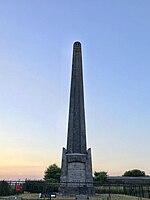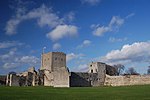Portchester railway station
DfT Category E stationsFormer London and South Western Railway stationsRailway stations in Great Britain opened in 1848Railway stations in HampshireRailway stations served by Govia Thameslink Railway ... and 2 more
Railway stations served by Great Western RailwayRailway stations served by South Western Railway

Portchester railway station serves the village of Portchester in Hampshire, England, 87 miles 35 chains (87.44 miles, 140.72 km) from London Waterloo. It was first opened by the LSWR in 1848 on their line from Fareham to Portsmouth.
Excerpt from the Wikipedia article Portchester railway station (License: CC BY-SA 3.0, Authors, Images).Portchester railway station
The Crossway,
Geographical coordinates (GPS) Address Nearby Places Show on map
Geographical coordinates (GPS)
| Latitude | Longitude |
|---|---|
| N 50.848888888889 ° | E -1.125 ° |
Address
Portchester
The Crossway
PO16 8NT , Portchester
England, United Kingdom
Open on Google Maps







